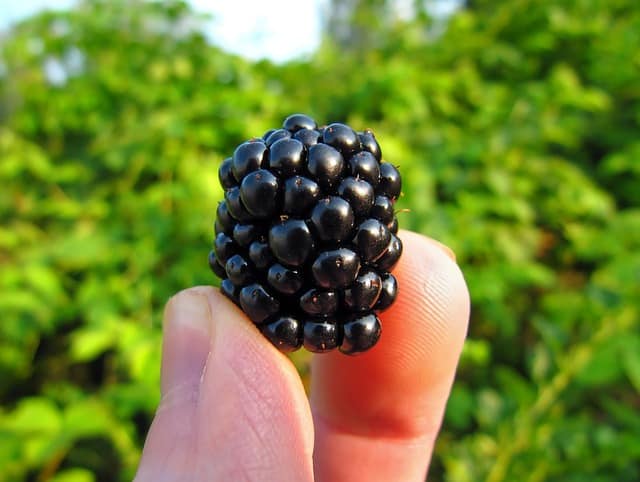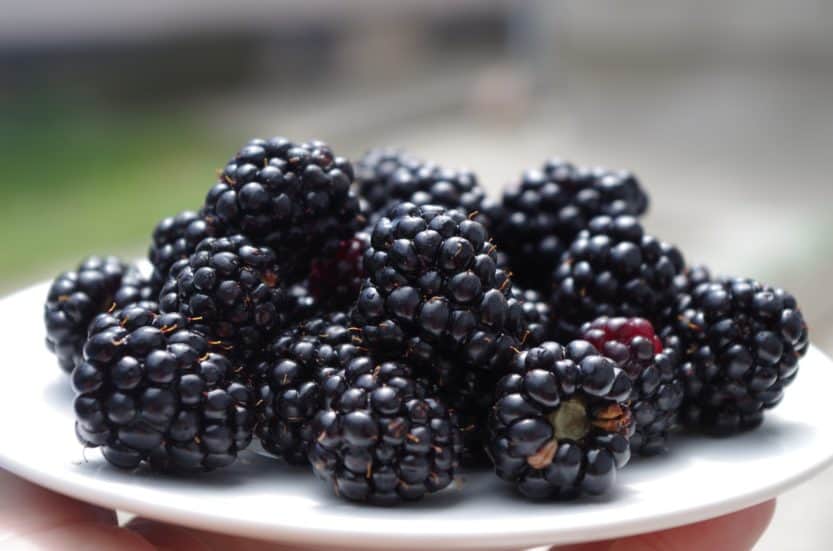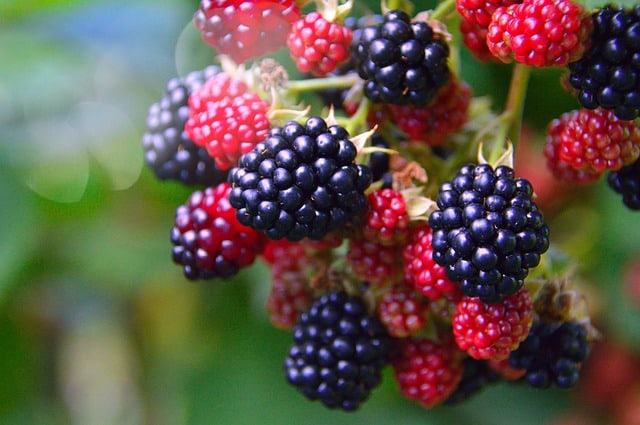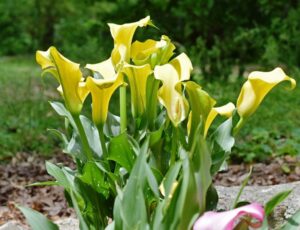Blackberries are a great way to add a quick growing and great tasting treat to your garden, while also providing healthy antioxidants and vitamin C to your diet. Blackberries can grow in most temperate climates with mild winters. Blackberry plants grow in most soils and are not too hard to establish in most home gardens.
Buy Blackberry Plants Online
Blackberry Varieties
The Blackberry plant does spread via its roots, so care should be taken to locate the plants in a spot where they can be easily contained. When picking a blackberry variety, the choices are abundant. If you live in a colder climate, it can help to choose an upright thorny cultivar; and, if you happen to live in an arid and windy climate, then trailing blackberries are a good pick.
Trailing Blackberries
Trailing blackberries are much more like their wild counterparts, so trellising and careful pruning are a must, in order to keep them manageable. Easier to maintain, erect blackberries form a more upright hedge, keeping the branches off the ground, limiting trellising, and protecting the plant from dying back in the winter.
Thornless Blackberries
Thornless blackberries are a better choice for warmer climates, They tend to be less cold hardy, although some varieties can be found that handle winter weather better than others. Of course, Thornless blackberries make pruning and harvesting a pleasurable task, while thorny varieties require long gloves and other forms of protection to prevent punctures and scrapes.
How to Grow Blackberries at Home
Planting Blackberries
Best Place to Plant Blackberry Bushes
When choosing a planting location for your blackberry plants, you should pick an area that gets full sun and has a slightly acidic soil. Pick a spot that retains moisture and is not too sandy, as blackberry plants need a good amount of water during the growing season. Domesticated Blackberry plants should not be planted too close to their wild relatives, in order to limit the possibility of disease transfer.
Blackberry Soil Preparation

Also avoid planting members of the nightshade family (tomato, peppers, etc.) nearby, because this can lead to the spread of “wilt”, which is a common blackberry disease. Once you have selected your location, prepare the soil by tilling in some compost and other soil amendments (Buy Online). Make sure you loosen the soil to a depth of at least a foot so that plants roots can establish quickly.
Blackberry Trellis System
At this point in time, you should put your trellising in the position, so that you will not have to trample your work once the plants are in the ground. If you do not want to put in trellising, another alternative would be to position your blackberry plants along a preexisting fence that has a good southern exposure.
When Should You Plant Blackberries?
The best time of year to plant blackberries is early spring; but, if you live in a warmer climate, a fall planting might also do well. The plants should be placed in holes wide enough to allow the roots to evenly spread out. Make sure that the crown of the plant is above the soil line and fill the soil back in while firming it around the base of the plant.
Blackberry Plant Spacing
Blackberry plants should be spaced about 3 to 6 feet (1 to 2 m) apart; however, trailing varieties might require more room in most cases. Once the plants are in the ground, soak the plants in deeply and keep watering them daily, in order to keep the plants from drying out.
How to Grow Blackberries at Home
Blackberry Care

Once the blackberry plants are established, they will need 1-2 inches of water (2.5-5 cm) of water weekly. A 2 inch (5 cm) layer of pine mulch might be a good idea, if you live in a dry climate, as this will help retain moisture during prolonged dry periods.
How to Keep Weeds Out of Blackberries
During the first year, the blackberry plant will be susceptible to overcrowding from weeds; and it is best to hand weed around the plant, in order to minimize root damage, because the next year’s canes will be emerging from the roots around the plant. Make sure to quickly remove any invasive nightshade family weeds or wild blackberries, in order to minimize the spread of disease.
How to Prune Blackberries

The first year’s growth should be left alone and no pruning should be necessary. however, you should make sure to train the branches, in order to keep the growth accessible for the future harvest. At the end of the first season, cutting back the branches to about four feet might help protect the plant from winter damage; however, it might not be needed.
Once the second season of arrives, you should see an abundance of new growth, so carefully prune the weak canes away at the base of the plant using pruning shears (Buy Online), in order to promote vigorous growth and higher yields. As the season progresses, make sure that the branches that have the most fruit are trellised and have access to good air flow and light, so that you get a healthy harvest.
When Do Blackberries Ripen?
Blackberries tend to ripen in the late summer. In some cases, if you have an ever-bearing variety, then you can get an early summer harvest and a later summer harvest. These varieties are called primocane bearing and are worth looking into if a late summer crop performs poorly in your area.
How to Pick Blackberries

It is pretty easy to tell when the berries are ready to be harvested as they will change color from red to a deep purple-black. The best time of day to pick blackberries is in the early morning when the berries have their highest sugar content.
You should pick the berries from the plant at least every two days, in order to limit losses from berries falling off the plant, and this should continue for a couple weeks. Blackberries can be stored in the refrigerator for up to a week; otherwise, you can freeze them or make jams for long-term storage.










